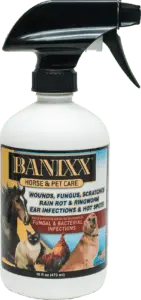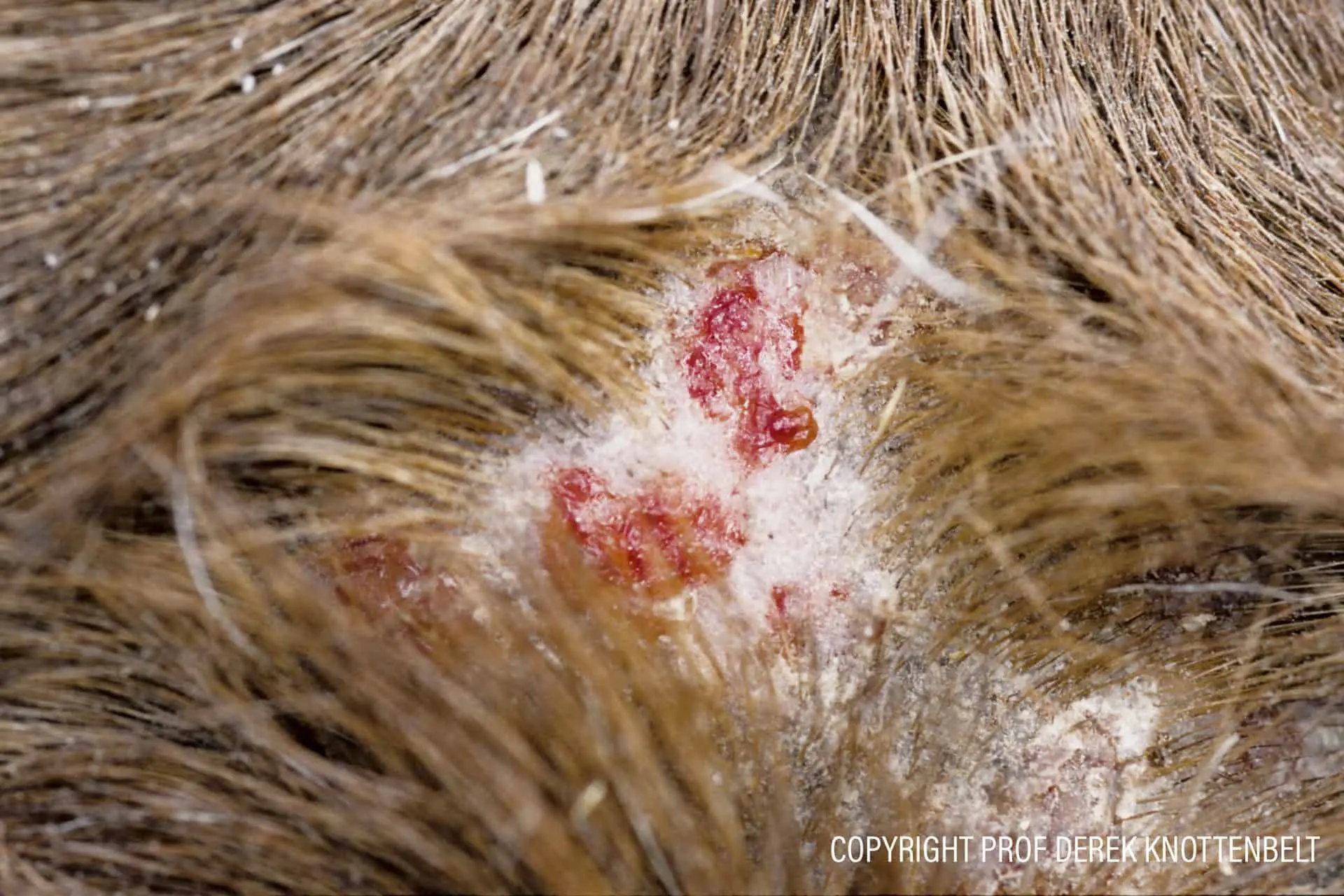How to treat Sweet Itch in your Horse/Pony
How do I treat my horse’s sweet itch?
If you notice your horse urgently rubbing and scratching itself on any and every available fence post, patch of gravel or nearby human, you may be dealing with a case of sweet itch. Sweet itch (also known as Summer Seasonal Recurrent Dermatitis or SSRD) most commonly affects the mane and tail areas, but it is also frequently found along the centerline of the stomach, and on the withers, neck and ears. Horses suffering from sweet itch may rub these areas until they lose all their hair and become raw, infected and covered in scabs. Unfortunately, when this happens you’re not only dealing with the sweet itch itself, but also the potential for a secondary infection caused by trauma to the skin from severe rubbing and itching.
What causes sweet itch?

Can Banixx help with sweet itch?
Yes! Banixx gives instant relief to uncomfortable itching in the form of a non-specific cooling effect. More importantly, Banixx will assist in “repair” of damaged tissue and help fight any infection that may be present in the area. Apply Banixx spray liberally to the area and pat it gently into the skin or, you may use large cotton balls to saturate the skin. Relief is immediate. For a final touch, allow the spray to dry, then apply Banixx Wound Care Cream that will stay in place as a medicated band-aid to protect the affected area. For severe cases of sweet itch, you may need to consult your veterinarian for a short term medication and/or consider keeping your horse in the stall during peak insect-biting times.
This story from Jane and her horse Honeymoon

In the summer, biting insects attack my horse’s center-line (along his tummy) and drive him crazy. He gets down on the ground like a dog and vigorously rubs his belly to try to get some relief, until his belly is raw. Of course, that only makes matters worse! Now every insect within flying distance is attracted to his raw belly. He was miserable. I thought, why not Banixx? What do i have to lose? So I sprayed his belly, patting the spray into his center-line until it was saturated (admittedly, not an easy thing to do), but, he got instant relief. In time, the scabs dropped off and he was again my happy, ornery thoroughbred!
